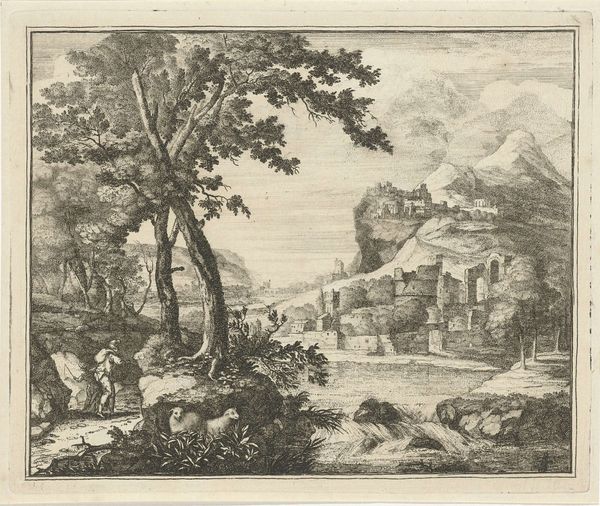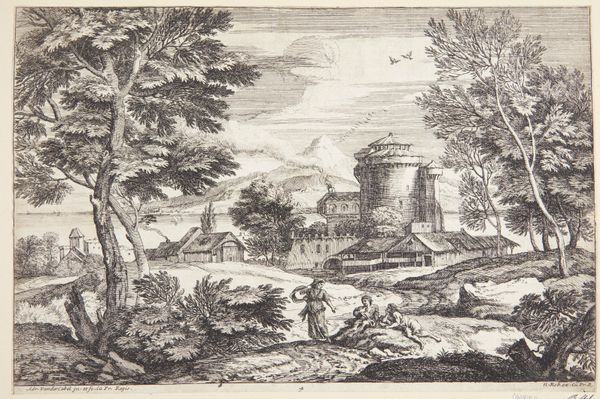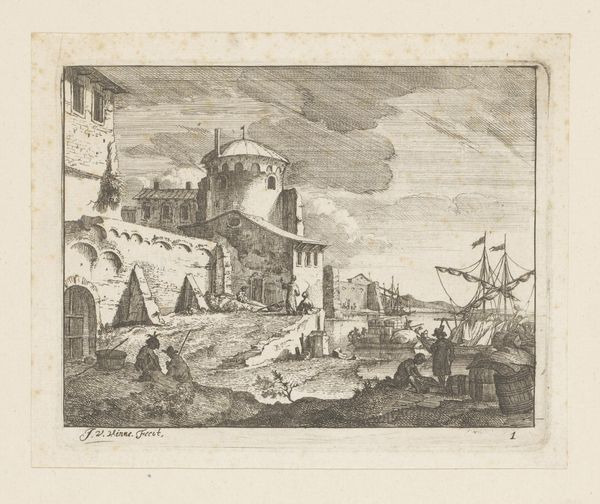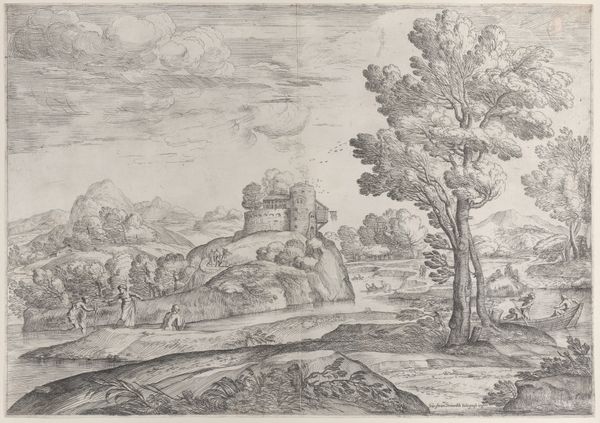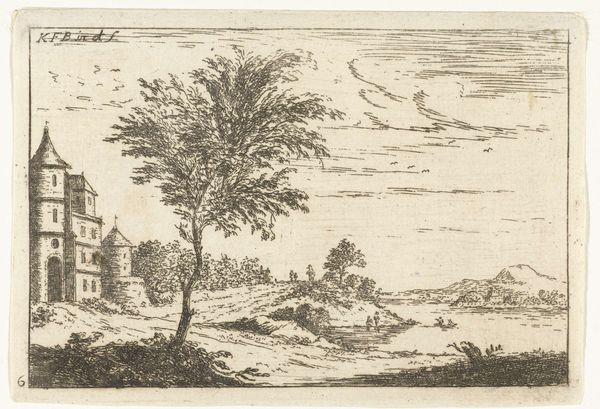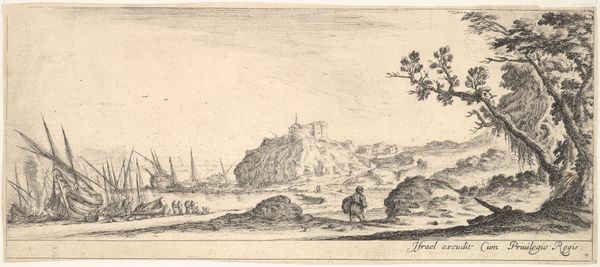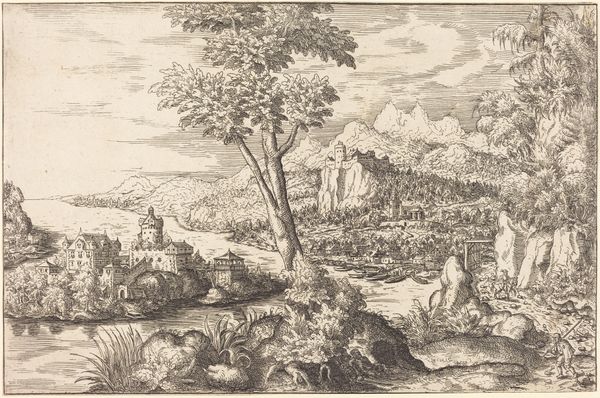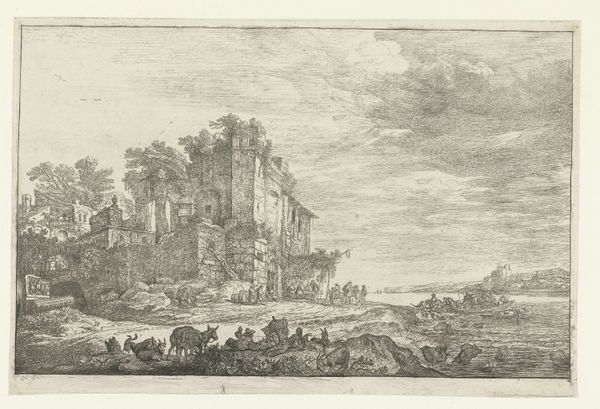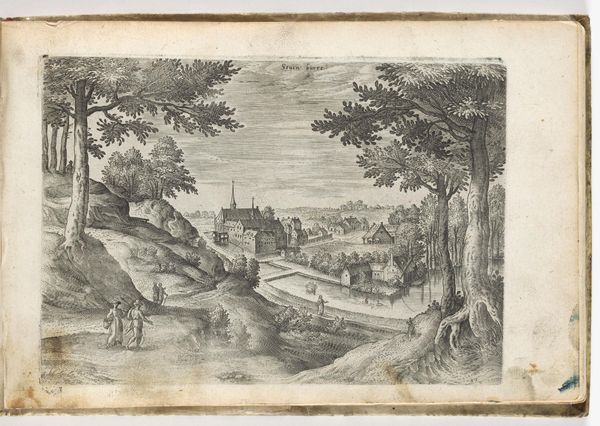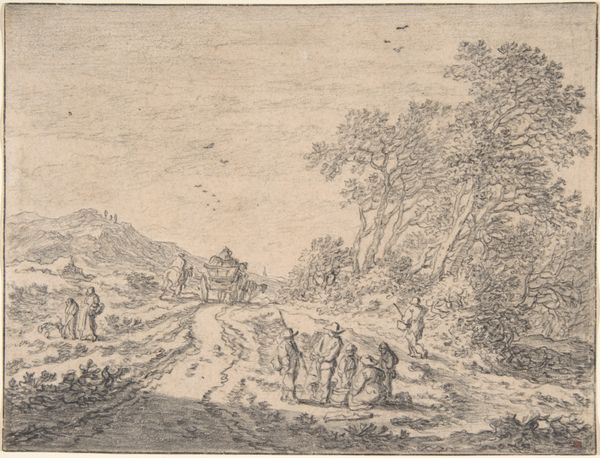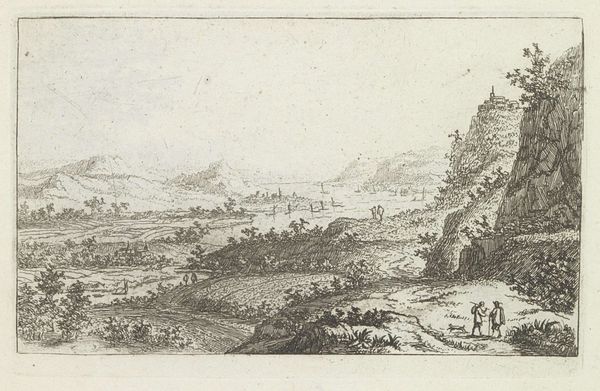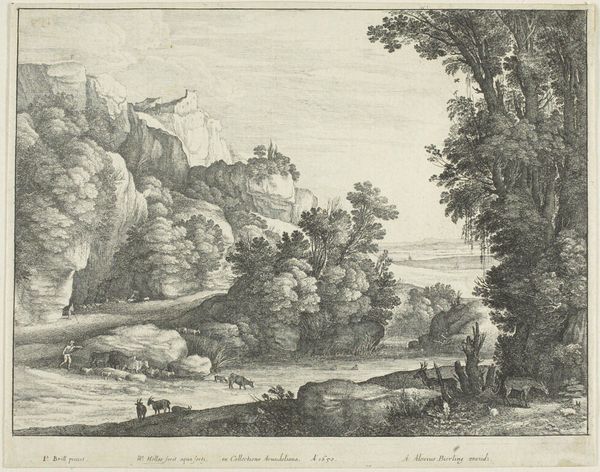
etching
#
baroque
#
etching
#
landscape
#
etching
#
history-painting
Dimensions: height 160 mm, width 253 mm
Copyright: Rijks Museum: Open Domain
Curator: Here we have Herman Breckerveld's "Landscape with Ruins and a Statue," an etching dating back to 1624. It's quite evocative, don't you think? Editor: Indeed. At first glance, there is a powerful sense of decay; that ruins of grand buildings will always be outlived by landscapes. Curator: Absolutely. Breckerveld's choice of etching is critical here. The fine lines, the gradations of tone…they mimic the way materials erode and decay over time. Look at the ruined structures – they aren’t just depicted; their very form is built up through a painstaking, subtractive process mirroring their actual breakdown. Editor: It brings forward interesting questions, no? Consider how "ruins" like these often romanticize a colonial past or mask a present injustice. Where there's one "old" ruin, there are many invisibilized settlements whose decay enabled the so-called grandeur we are admiring. Curator: I hadn’t considered that in relation to this particular piece. Although these romanticised ruins became fashionable during this time for wealthy landowners that wanted to establish a kind of imperial history to their lands, but they never saw how this directly relates to how the dutch landscapes where forming at that time through a growing social unrest, and wealth division of landowners to regular folk. Editor: It reflects a complex interaction between art, economy, and control. Etchings such as this became important sites for negotiation, allowing various interpretations depending on social standpoint, a concept that would then make itself increasingly present throughout Breckerveld's later work, influencing how later movements explored print's use as protest, as popular resistance, too. Curator: You know, examining the statue situated at the center here, and its location makes a statement to the social power these individuals represented, yet its depiction also subtly critiques that social stance, no? Editor: Perhaps unintentionally; but, through exploring our shared histories, that’s precisely how this image gains richer meaning now. Curator: A potent point. The ruins underscore not only aesthetic choices tied into the period's romantic sensibility, but questions power itself. Editor: I walk away understanding that historical artifacts are social touchstones whose artistic value relies primarily on the conversation they build for the now.
Comments
No comments
Be the first to comment and join the conversation on the ultimate creative platform.
